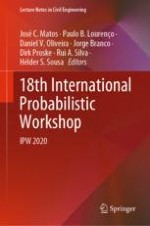2021 | OriginalPaper | Chapter
Numerical Modeling of an Extrusion-Based Concrete Printing Process Considering Spatially and Temporarily Varying Material and Process Parameters
Authors : Albrecht Schmidt, Meron Mengesha, Luise Göbel, Carsten Könke, Tom Lahmer
Published in: 18th International Probabilistic Workshop
Publisher: Springer International Publishing
Activate our intelligent search to find suitable subject content or patents.
Select sections of text to find matching patents with Artificial Intelligence. powered by
Select sections of text to find additional relevant content using AI-assisted search. powered by
